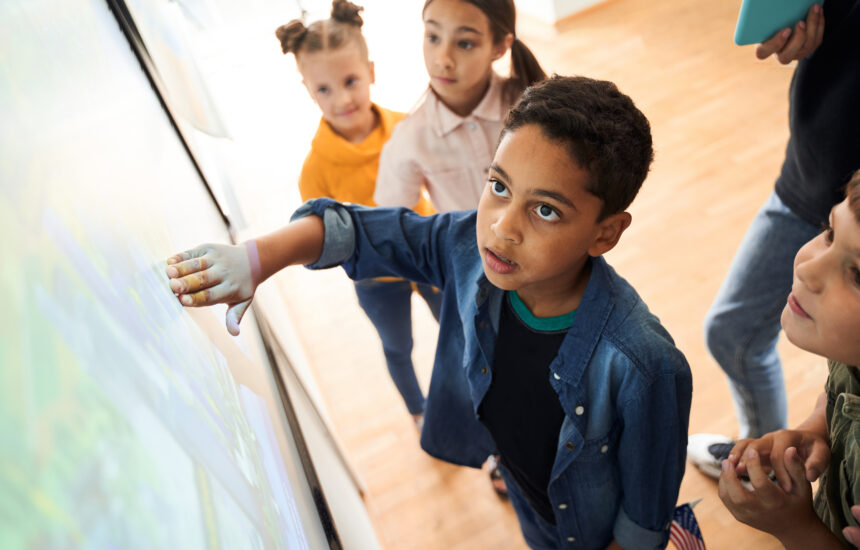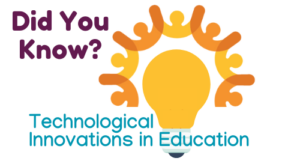Inclusive Innovation: Integrating Assistive Technology Into Early Childhood Education


Assistive technology for education is an array of devices, software, and strategies designed to enhance learning for children with diverse needs, including disabilities, developmental delays, or learning challenges. Its use represents a crucial convergence of innovation and inclusivity. Such technology is essential in today’s varied educational landscape, providing tailored support for a wide range of developmental and learning challenges and unlocking new realms of learning and interaction.
 Assistive technology can be particularly beneficial during early childhood, which is a critical period for development characterized by rapid growth and learning. Disabilities, developmental delays, or learning challenges may hinder young children’s ability to engage with traditional educational methods. With the help of assistive technology, educators can unlock the potential of young children with diverse learning needs.
Assistive technology can be particularly beneficial during early childhood, which is a critical period for development characterized by rapid growth and learning. Disabilities, developmental delays, or learning challenges may hinder young children’s ability to engage with traditional educational methods. With the help of assistive technology, educators can unlock the potential of young children with diverse learning needs.
Assistive technology can serve as a bridge between children’s current abilities and their potential, opening up a world of learning opportunities that might otherwise be inaccessible. It also allows for differentiated instruction, where educational content and methods are tailored to meet the diverse needs of all students. This customization ensures that no child is left behind due to their unique learning challenges.
Moreover, assistive technology can transform the classroom dynamics. It encourages collaboration and interaction among students with varying abilities, promoting an understanding and acceptance of differences. Enriching the educational experience for all students fosters a culture of diversity and understanding from the earliest stages of education.
Assistive technology for early childhood education can be broadly classified into three categories: low-tech, mid-tech, and high-tech. Each category serves distinct needs and integrates into the learning environment with varying degrees of complexity and sophistication.
These simple, often inexpensive, devices or solutions provide support without electronic or digital components.
Examples include:
This more advanced technology typically involves some electronic components but doesn’t offer the complexity of high-tech devices.
Examples include:
These are sophisticated devices or software that provide extensive assistance and customization.
Examples include:
The effective integration of these technologies into early childhood education requires thoughtful consideration of the specific challenges and abilities of each child, as well as the curriculum’s goals. When selected and applied thoughtfully, assistive technology can transform the educational experience, providing a path for all children to access, engage with, and excel on individualized learning journeys.
Cognitive Development
Assistive technology can enhance learning processes and help children overcome specific cognitive challenges. It can support memory, attention, and problem-solving and break complex tasks into more manageable steps, making learning more structured and less overwhelming. For instance, text-to-speech software aids children with dyslexia by improving their reading skills, allowing them to process written material more effectively. Similarly, interactive software that adapts to a child’s learning pace can enhance memory, attention, and problem-solving skills by providing personalized, engaging challenges.
Social Development
Social interaction is crucial in early childhood, and certain assistive technology tools can provide a non-intrusive way to facilitate participation and communication. Devices that assist with communication, such as speech-generating devices for non-verbal children, enable them to express their thoughts and engage in conversations with peers and educators. This interaction is vital for developing social skills and building relationships. Furthermore, inclusive classrooms, where all children have access to learning through assistive technology, foster an environment of empathy, cooperation, and peer support.
Emotional Development
Assistive technology provides a sense of independence and confidence, benefiting children’s emotional development. When children can participate in learning activities and express themselves, their self-esteem and motivation increase. For example, a child who struggles with handwriting and feels frustrated might use a word processor to write stories or complete assignments, leading to a more positive and engaging learning experience.

Assistive technology is poised to become an even more integral part of education, continually adapting and evolving to meet the needs of all learners. As we navigate this journey, the focus must always remain on creating inclusive, engaging, and effective learning environments for every child.
The journey from recognizing the diverse needs of students to the successful implementation and adoption of assistive technology is complex and filled with challenges. Yet, the promise of creating more inclusive, engaging, and effective learning environments for all children is an endeavor worth pursuing.
Childhood Education International (CE International) is dedicated to empowering leaders to catalyze innovation and cultivate positive transformations in their educational ecosystems, always emphasizing the responsible adoption of emerging technologies.
Childhood Education: Innovations is a bimonthly magazine dedicated to sharing unique, interesting, and stimulating information from schools and learning environments around the world. Whether you are facing specific challenges in your work or simply want to stay informed about the most recent ideas and innovations in childhood education, you will find inspiration and ideas in this education publication.
Articles can be accessed by paying a one-time download fee per article using the links below, or by subscribing. Subscribers receive new issues and access to more than 100 years of back issues.
The Journal of Research in Childhood Education is an academic journal the presents peer-reviewed education research on a wide range of ideas, including theory articles and studies on all scales. From empirical research projects to small-case studies carried out in naturalistic settings, such as schools and community centers, articles track data across cultures and study research design.
Articles can be accessed by paying a one-time download fee per article using the links below, or by subscribing. Subscribers receive new issues and access to back issues.
Childhood Education International is committed to fostering inclusive approaches to education that ensure every child has the opportunities they deserve to participate in all aspects of education, learning, and life.
Recent inclusive education projects and initiatives include: